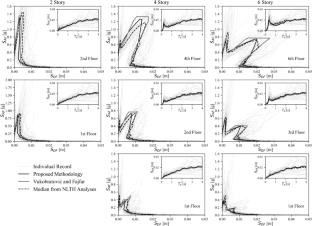Estimation of consistent absolute acceleration and relative displacement floor response spectra in existing masonry-infilled reinforced concrete buildings
Abstract
Non-structural elements play a crucial role in the overall seismic performance of buildings, as has been largely demonstrated in recent earthquakes that have stuck densely populated regions. Therefore, the development of performance-based seismic design and assessment methodologies for non-structural elements is becoming an important research topic within earthquake engineering. A crucial aspect in such methodologies is the accurate prediction of the seismic demands acting on non-structural elements in terms of consistent absolute acceleration and relative displacement floor response spectra for the most common types of structural seismic force resisting systems. Masonry-infilled reinforced concrete frames are one of the most common building typologies in high seismicity regions, such as the Mediterranean region. This study proposes a simplified procedure to estimate consistent absolute acceleration and relative displacement floor response spectra in masonry-infilled reinforced concrete frames based on an existing methodology to estimate consistent floor response spectra in bare reinforced concrete frames. Nine archetype masonry-infilled reinforced concrete buildings with different numbers of storeys and arranged with three masonry infill typologies were considered as case-study archetypes, and were used to validate the proposed methodology using nonlinear time history analyses. The proposed procedure can accurately estimate consistent absolute acceleration and relative displacement floor response spectra for masonry-infilled reinforced concrete buildings that respond both in the elastic and nonlinear ranges for all the non-structural period range. The estimates of floor response spectra given by the proposed procedure are fully consistent with the well-known pseudo-spectral relationship for the entire non-structural period range.



 求助内容:
求助内容: 应助结果提醒方式:
应助结果提醒方式:


